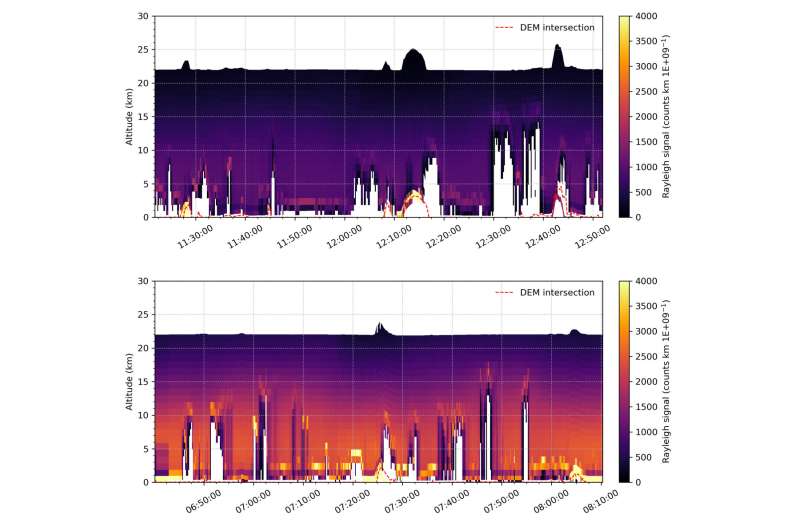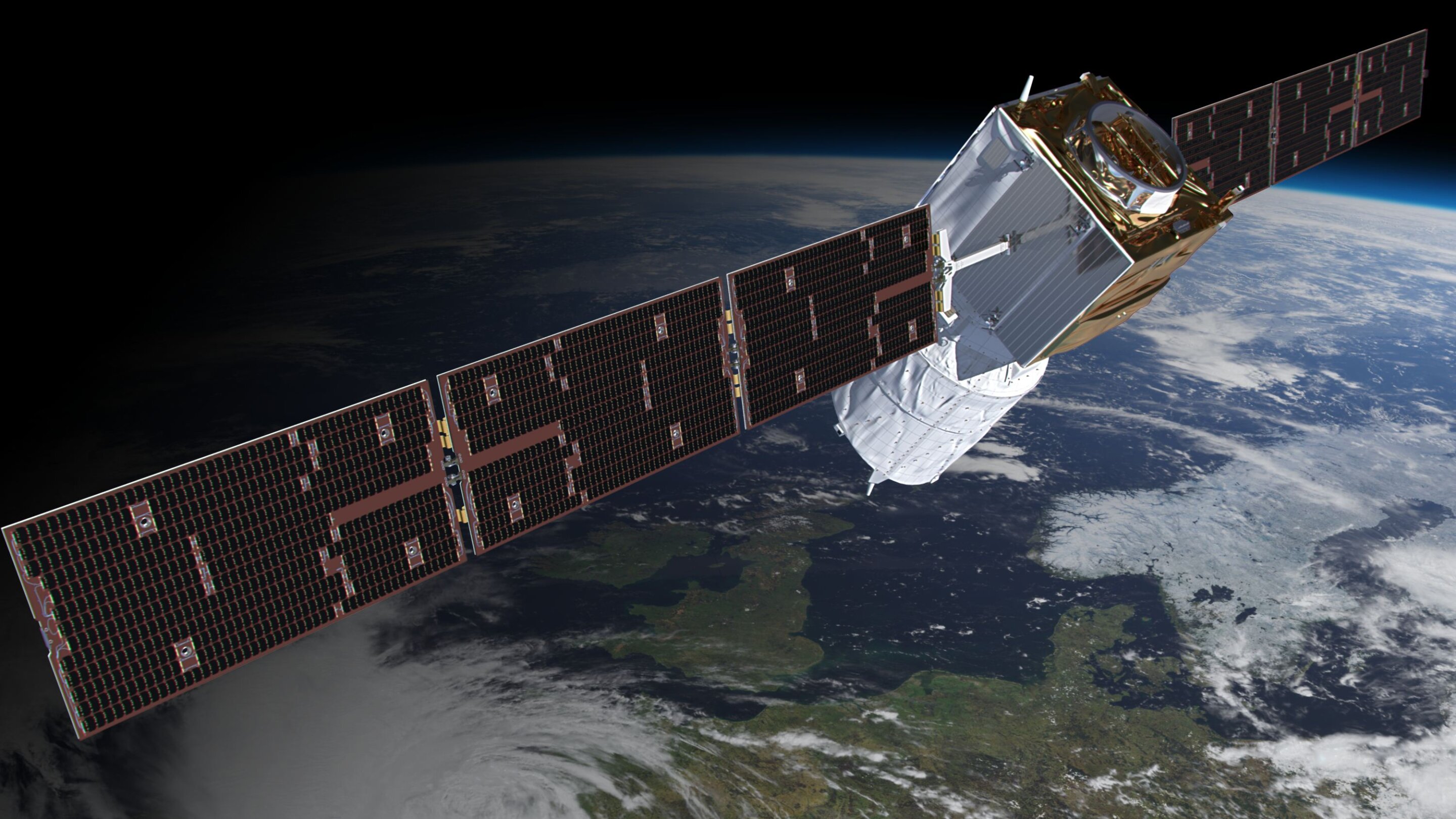ESA’s wind mission continues to shine as engineers have labored their Christmas magic. With a change again to its unique laser, Aeolus is now shining greater than twice as brightly with its finest ever efficiency—simply in time for the vacations.
It is one other exceptional success for ESA’s fifth Earth Explorer. Launched in 2018 after many technical challenges, Aeolus pioneered what none had pioneered earlier than—immediately measuring world wind profiles from space utilizing a laser.
Aeolus’ Aladin laser beams UV gentle into Earth’s environment and detects the sunshine scattered again from air molecules, water and particles corresponding to dust. A way generally known as Doppler wind lidar permits us to calculate wind speed based mostly on the modifications in frequency of the backscattered gentle that returns to the satellite.
Within the 12 months following the satellite’s launch, nevertheless, jeopardy struck. With the unique laser output power (FM-A) degrading greater than foreseen, the mission was compelled into an early change to the backup laser (FM-B).
The second laser has carried out admirably, taking Aeolus past its predicted lifetime in space. Aeolus has exceeded expectations to ship wind knowledge of such top quality that it is now routinely utilized by climate forecasters worldwide.
The satellite’s world protection meant that, in the course of the 2020 COVID lockdowns when plane that may usually present weather data have been grounded, Aeolus managed to chip in with lacking measurements. Latest outcomes point out that Aeolus measurements may also enhance fashions monitoring volcanic plumes and tropical cyclones. The general financial advantages of the mission have been calculated as €3.5 billion, a return on funding of greater than 7:1.
Three years on, regardless of growing the power of the FM-B laser, the atmospheric return sign—although nonetheless offering usable knowledge—was as soon as once more deteriorating quickly.
You would be forgiven for considering that this may imply the top for the Aeolus mission, however ESA and business undertaking groups had different concepts. After two months of tirelessly troubleshooting, tinkering and tailoring, they’ve managed to eke extra life out of the satellite with a change again to the unique FM-A instrument.
Not solely that, Aladin is shining brightly once more.
“It is a tremendous achievement,” says Denny Wernham, ESA’s Aeolus Payload Supervisor. “Now we have achieved in depth investigations and now perceive why there was degradation of the emit path power of the instrument throughout operations with FM-B regardless of the nice efficiency of the laser.
“However we’re delighted with the efficiency of the FM-A laser sign. Utilizing lower than half the laser power emitted by the FM-B, we have now elevated the atmospheric return sign by an element of two.2 in comparison with the top of FM-B laser operations. It is due to the exhausting work, dedication and teamwork of all concerned.”
The wind knowledge have improved, too. Evaluation has demonstrated that the Rayleigh wind random error—small errors within the measurement of wind knowledge that fluctuate between observations—has been decreased by 31%, and the Aeolus Information, Innovation, and Science Cluster (DISC) is engaged on additional enhancements.

“The current wind knowledge high quality is excellent. That is one of the best near-real time knowledge of the mission, because it was first publicly launched in Could 2020, and just like the re-processed knowledge high quality from Autumn 2019,” says Mike Rennie of the European Heart for Medium-Vary Climate Forecasts (ECMWF).
It is too quickly to inform how lengthy the mission will proceed to offer usable knowledge, however the preliminary indicators counsel a number of months’ value not less than. For now, the FM-A sign appears comparatively secure, which is promising.
Together with information that Aeolus-2, a future operational Doppler wind lidar mission partnered by ESA and European Group for the Exploitation of Meteorological Satellites (Eumetsat), has obtained full assist on the current ESA Council Ministerial Assembly, climate forecasters will probably be delighted with their early Christmas haul this 12 months.
“It is a particular mission with a particular group,” says Aeolus Mission Supervisor Tommaso Parrinello. “It is a testomony to the significance of our Earth Explorer missions that we cannot solely exhibit important new applied sciences in space, however that the information are proving invaluable to operational customers corresponding to climate forecasters and to all the scientific neighborhood.
“The work of our devoted groups to grasp and enhance the Aladin laser will probably be essential to assist assist the event of future operational missions corresponding to Aeolus-2. Within the meantime, I look ahead to seeing Aeolus shining a lightweight on Earth’s winds for some time but.”
Supplied by
European Space Agency
Quotation:
Christmas comes early for Aeolus with improved laser efficiency (2022, December 16)
retrieved 16 December 2022
from https://phys.org/information/2022-12-christmas-early-aeolus-laser.html
This doc is topic to copyright. Aside from any honest dealing for the aim of personal research or analysis, no
half could also be reproduced with out the written permission. The content material is supplied for info functions solely.





